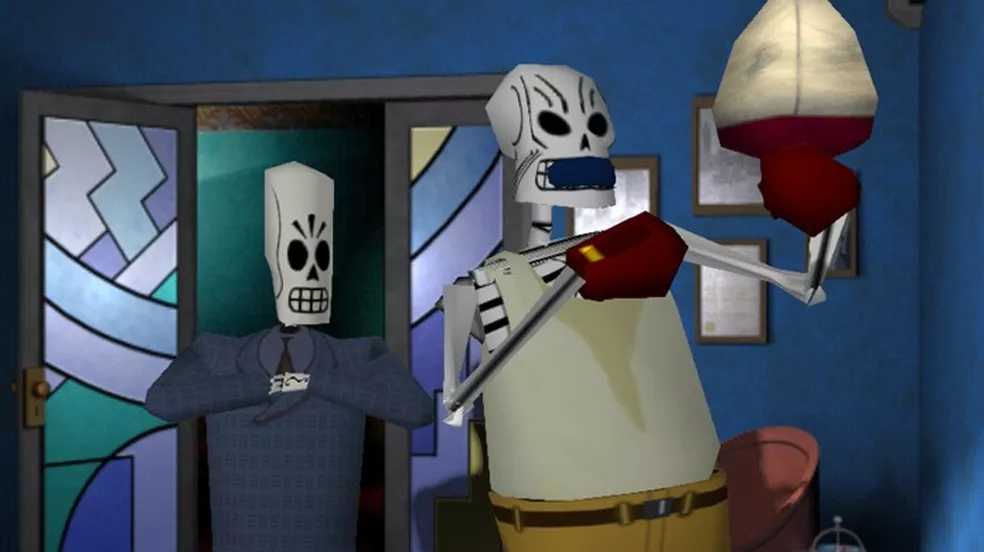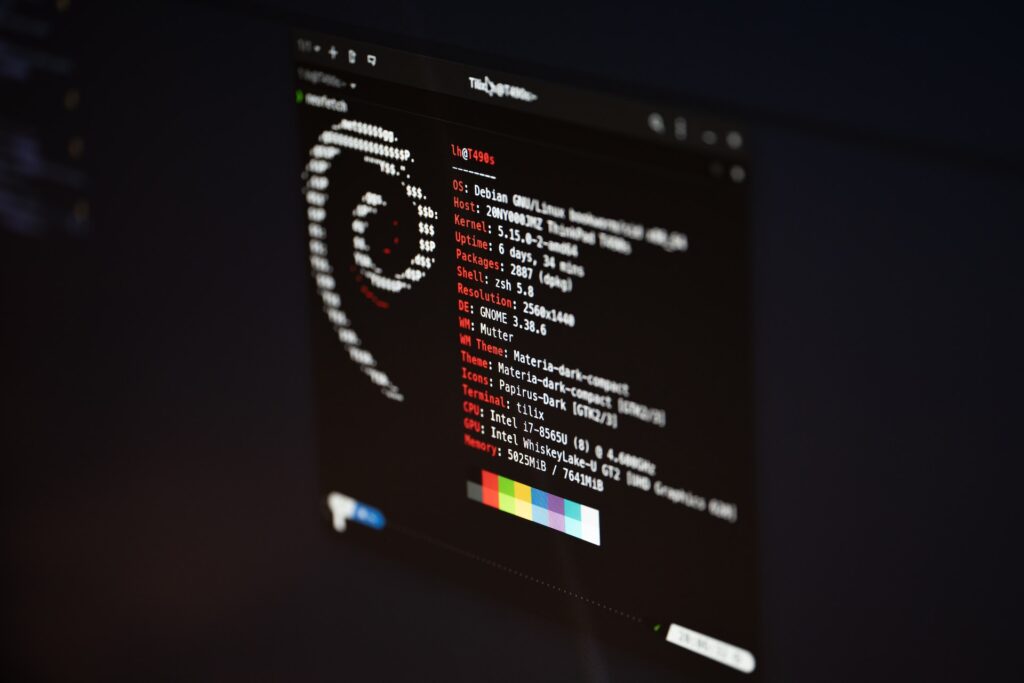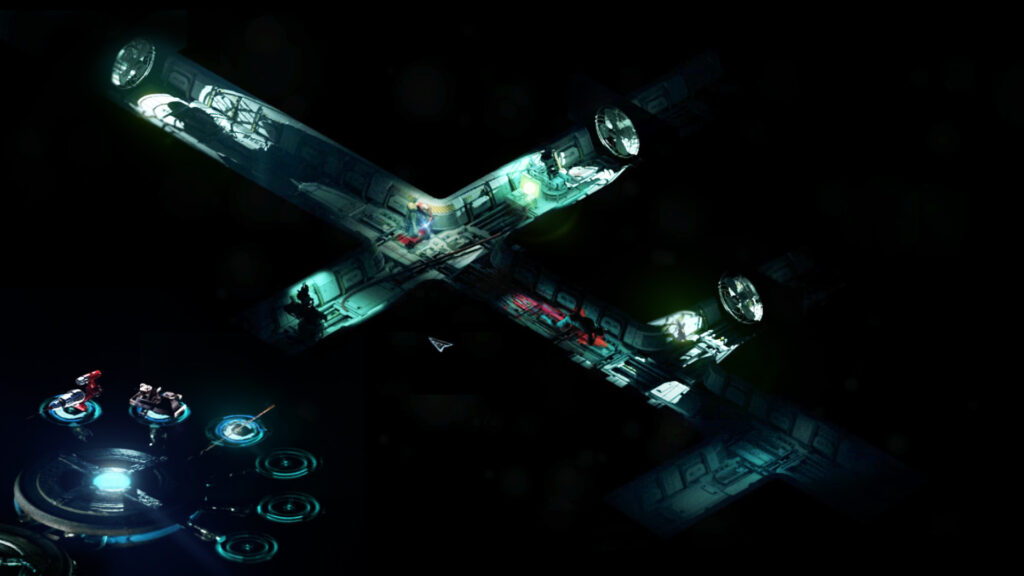Remember those old-school computer games where you’d click around with your mouse, solving puzzles and exploring quirky worlds? Those were point-and-click games – and they had a unique charm, bringing a sense of nostalgia for a simpler time in our lives.
Do names like Monkey Island, Day of the Tentacle, or Grim Fandango ring a bell or warm your heart? They were all about clever puzzles, witty dialogue, memorable characters, and overall awesome point-and-click gameplay.
There will always be a demand for retro-inspired experiences, and with today’s readily available tools and game engines, creating a point-and-click adventure is easier than ever.
Whether you’re a seasoned developer or just starting out, this article will guide you through the process. We’ll explore the key elements of how to create a point-and-click game, offering tips and considerations to help you bring your own pixelated world to life!
Good foundations are key to creating a point-and-click game

Creating a point-and-click game involves some unique challenges and opportunities – their simplicity compared to more complex games can be misleading! Here are some key considerations to keep in mind:
Pick the right engine for your project
Before you put in any work or learn a programming language, you better pick the game engine that better suits your project. It’s a process similar to choosing the foundation for a house, a crucial decision that will impact every aspect of your development process.
Thankfully, for point-and-click games, you have a few great options: Adventure Game Studio and Visionaire Studio are specifically designed for this type of game. They come with built-in tools and features that make it easy to create classic-style games.
If you’re comfortable with coding, Unity and Godot are versatile game engines that can be used to create fantastic point-and-click games. Sure, they might have a steeper learning curve, but they offer far greater flexibility and control over your creation.

Note: while these games seem simple on the surface, there’s quite a lot of code working behind the scenes to make everything work. For example, you’ll need to handle inventory management, dialogue trees, puzzle logic, character movement, and switching between scenes.
Nonetheless, many game engines offer visual scripting tools to aid you in creating interactive elements without writing complex code. Having a basic understanding of programming concepts definitely helps, though!
Have a killer story
Point-and-click games usually thrive on strong narratives. Unlike action games where the focus is on reflexes, fast-paced gameplay, and being resourceful, point-and-click games rely on story, characters, dialogues, and the world to keep players engaged.
Think of fan-favorite point-and-click adventures of the past – they often feature memorable characters, dialogues that stick with you long after finishing the game, and plots that keep you guessing until the very end. A good story is the backbone of your point-and-click experience, so make it count!
Create a universe/world worth exploring

Many believe the environments in games are mere backdrops for everything else, but good game designers understand they’re an extension of your story.
Of course, it goes without saying that they should be visually appealing. But they also need to be functional and easy to navigate. Players should be able to click around, explore different areas, and interact with objects without getting lost or confused. A well-designed world draws players in and makes them want to uncover its secrets (Zelda games or Shadow of the Colossus, anyone?).
In point-and-click games, the world itself often becomes a character. Ponder about the atmospheric locations in games like Grim Fandango or the quirky environments in Day of the Tentacle. These universes are as memorable as the characters inhabiting them, adding depth and richness to the overall experience.
You may refer to our beginner’s worldbuilding guide here!
Show, don’t tell
Visual storytelling is an especially powerful tool in point-and-click games! Instead of relying solely on text walls, you can convey information and build your narrative through visuals, animation, and environment.
Think about it: a character’s facial expression can tell you more about their personality than a Tolkien-inspired description. A dusty, cobweb-filled room may convey a sense of neglect and mystery, while a fidgeting character can hint at their nervousness.

Handle mind-bending puzzles with care
Many point-and-click games feature puzzles, and probably so should yours.
In this genre, they’re usually what challenge players, make them think, and give them that satisfying “Eureka!” moment when they finally crack the code.
Designing good puzzles is an art form, though – they need to be clever, logical, and integrated into the story. A challenge that feels random, out of place, inconsistent, or unnecessarily easy/difficult can break the immersion and frustrate players. Instead, provide players with just enough information to solve them without making it too obvious and slowly increase their difficulty.
Unlike other genres where puzzles are either optional or secondary to the core gameplay, in point-and-click games, they often are part of the core gameplay. Puzzles drive the story forward, unlock new areas, and reveal more about the game’s world and characters.

Here are a few common puzzle ideas to get you inspired:
- Inventory puzzles: they involve collecting and combining items in a particular way to solve problems, like a rope and a hook to climb a high ledge;
- Logic puzzles: test the players’ deductive reasoning and logical thinking skills to arrive at a solution. Number sequences and code-breaking are staples in this category;
- Dialogue puzzles: players might need to choose the right dialogue sequence to obtain relevant information, persuade a character, or uncover a secret;
- Environmental puzzles: perhaps players will need to manipulate objects in the scene, trigger a hidden mechanism, or find a secret passage.
Set the perfect mood with good sound and vision
Sound and visuals are crucial for creating an atmosphere that feels just right. Even in point-and-click games, music sets the tone, sound effects bring the world to life, and visuals establish the game’s aesthetic and style.
For example, consider the eerie backing tracks in a horror-themed game and contrast them to the whimsical tunes in lighthearted adventures – completely different, right? These three elements work together to create an immersive experience that draws players in and keeps them engaged throughout the story.

How to create a point-and-click game: closing thoughts
Creating a point-and-click game is a rewarding experience, blending storytelling, puzzle design, and artistic vision. We’ve covered the key considerations, from building a solid foundation to designing engaging puzzles and immersive worlds.
Before you unleash your game upon the world, though, remember the importance of testing and refinement. Get fresh eyes on your game, gather feedback from alpha/beta players, and use that feedback to make your game even better.
This iterative process – designing, testing, refining, and repeating – helps you identify and fix bugs, balance the difficulty of your puzzles, and ensure a smooth and enjoyable player experience.
And, let’s be real, nobody wants to play a game riddled with bugs or puzzles that make you want to pull your hair out, though they might make up for some funny moments.
All in all, point-and-click games offer a blank canvas for creativity and storytelling. Don’t be afraid to experiment, think outside the box, and push the boundaries of the genre. Embrace the quirky, the unexpected, and perhaps the bizarre while at it, too.
Bring your game to life with Main Leaf Games
Do you have a killer idea for a point-and-click adventure but aren’t sure where to start? Or maybe you’ve hit a roadblock in your development journey and need a helping hand? Whatever the case, Main Leaf is here to support you. We’re a team of experienced developers and artists passionate about creating unique and engaging games.
Let’s collaborate – tell us your unique vision, and we’ll help you bring it to life, one line of code or game-ready asset at a time!

